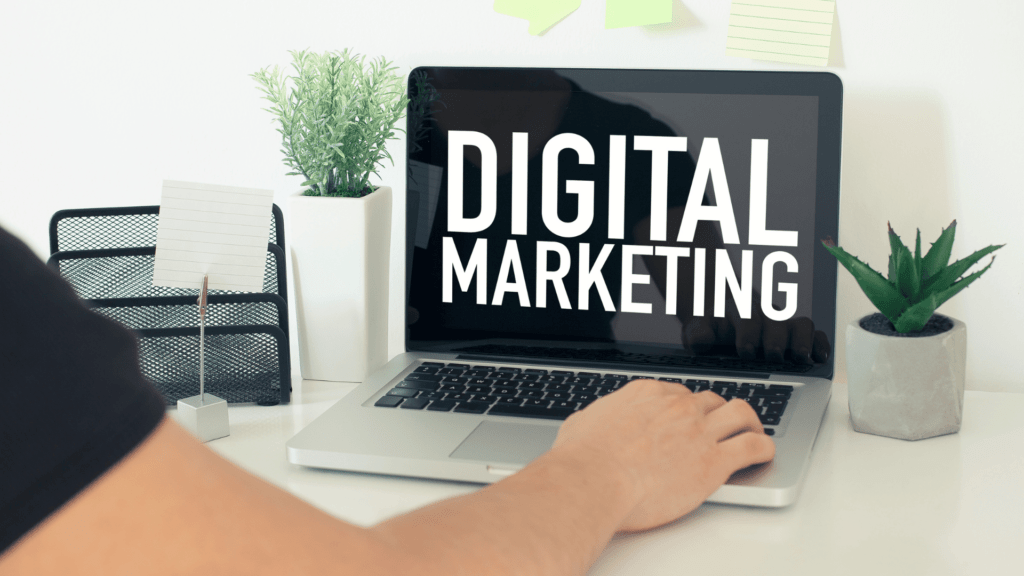In today’s technology-driven world, digital marketing has become a vital tool for businesses of all sizes. Whether you’re an entrepreneur, a small business owner, or someone looking to explore a new career path, understanding the basics of digital marketing is crucial. This guide will walk you through the fundamentals, helping you grasp the concepts, strategies, and tools you need to succeed in the digital landscape.
What is Digital Marketing?
Digital marketing involves utilizing digital channels like websites, social media, search engines, and email to promote products or services. Unlike traditional marketing, which relies on mediums like print ads, television, and radio, digital marketing offers more targeted and measurable results. It allows businesses to connect with their audience in real time and engage them with personalized content.
Why Digital Marketing is Important
In a world where nearly 4.9 billion people use the internet, digital marketing is no longer optional; it’s a necessity. Here’s why:
- Wider Reach: Digital marketing enables businesses to connect with a global audience. With the internet, geographical boundaries no longer limit marketing efforts.
- Cost-Effective: Unlike traditional marketing, digital marketing is more budget-friendly. It allows small businesses to compete with larger companies even on a limited budget.
- Measurable Results: With tools like Google Analytics and social media insights, businesses can track their marketing performance in real time, making data-driven decisions.
- Personalization: Digital marketing enables businesses to deliver personalized content to their audience, increasing engagement and conversion rates.
- Improved Conversion Rates: With digital marketing, converting a customer is just a few clicks away. Users can take immediate action from a well-crafted email or a compelling social media post.
Core Components of Digital Marketing
To succeed in digital marketing, it’s essential to understand its core components.
- Search Engine Optimization (SEO)
SEO aims to improve your website’s visibility by boosting its ranking on search engine results pages (SERPs). By using relevant keywords, creating high-quality content, and improving website performance, businesses can attract more organic traffic. SEO is a long-term strategy that focuses on building authority and trust with search engines like Google. - Content Marketing
Content marketing focuses on producing valuable, relevant, and consistent content to attract and engage a target audience. This can encompass a variety of content types, including blog posts, videos, infographics, eBooks, and more. The goal is to provide useful information that solves problems for your audience, ultimately leading them to become customers. - Social Media Marketing
Social media platforms like Facebook, Instagram, Twitter, and LinkedIn offer businesses a way to connect with their audience, build brand awareness, and drive traffic. Social media marketing involves creating and sharing content, running ads, and engaging with followers to build a loyal community. - Email Marketing
Email marketing is a powerful strategy for nurturing leads and converting them into customers. It involves sending personalized emails to a segmented audience, offering value, and guiding them through the sales funnel. Whether it’s a newsletter, promotional offer, or product update, email marketing helps maintain a direct line of communication with your audience. - Pay-Per-Click (PPC) Advertising
PPC advertising is a model in which businesses pay a fee whenever someone clicks on their ad. These ads can appear on search engines, social media platforms, or other websites. Google Ads is a widely used PPC platform where businesses can bid on keywords to show ads to users searching for those specific terms. - Affiliate Marketing
Affiliate marketing involves collaborating with businesses or individuals who promote your products in return for a commission on each sale. It’s a performance-based strategy that can help you reach a wider audience without upfront costs. - Influencer Marketing
Influencer marketing leverages the reach and credibility of influencers—people with a large following on social media or other platforms. By collaborating with influencers, businesses can promote their products to a broader audience, often with higher engagement rates.
Steps to Get Started with Digital Marketing
If you’re new to digital marketing, starting out can seem daunting. Here’s a step-by-step guide to help you get started on your journey:
- Define Your Goals
What do you want to achieve with digital marketing? Setting clear goals—whether it’s boosting website traffic, generating leads, or enhancing brand awareness—will guide your strategy effectively. - Identify Your Target Audience
Knowing your audience and their needs is vital. Conduct market research to identify your target audience’s demographics, interests, and online behavior. - Create a Website
Your website acts as the central hub for your digital marketing efforts. Ensure it is easy to navigate, compatible with mobile devices, and optimized for search engines. Your website should clearly convey your brand message and provide an easy path for users to take action. - Develop a Content Strategy
Content is the backbone of digital marketing. Develop a content calendar that aligns with your objectives and meets the needs of your audience. Focus on producing high-quality content that adds value and solves problems for your audience. - Leverage Social Media
Select the social media platforms where your audience is most engaged. Create a regular posting schedule and actively interact with your followers. Social media is not just for promotion; it’s also a place to build relationships with your audience. - Invest in SEO
Begin by conducting keyword research to pinpoint the terms your audience is using in their searches. Optimize your website and content for these keywords. Remember, SEO is a long-term strategy, so patience and consistency are essential. - Run PPC Campaigns
If you have the budget, consider running PPC campaigns to drive traffic and generate leads quickly. Platforms like Google Ads allow you to target specific keywords and demographics, ensuring your ads reach the right people. - Measure and Optimize
Leverage analytics tools to assess the performance of your digital marketing. Keep an eye on key metrics such as website traffic, conversion rates, and social media interactions. Use these insights to adjust your strategy and enhance your results over time.
Conclusion
Digital marketing is a powerful tool that can help businesses of all sizes thrive in the digital age. By understanding its basics and implementing the right strategies, you can reach a wider audience, build strong relationships, and achieve your business goals. Remember, digital marketing is an ever-evolving field, so stay curious, keep learning, and adapt to new trends and technologies. Whether you’re just starting or looking to improve your current efforts, this guide provides a solid foundation to build your digital marketing strategy.
At Action DnA, we not only provide expert-led training to help you enhance your digital marketing skills but also offer comprehensive digital marketing services to help your business succeed. Explore our courses and services to start your journey toward digital success today.

